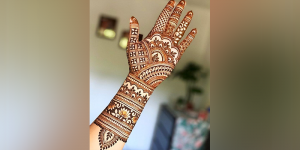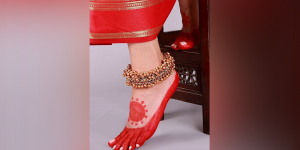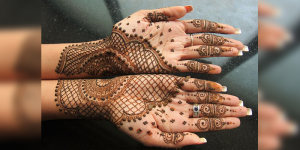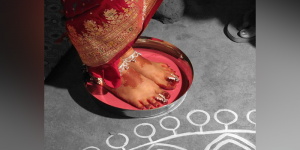
The tradition of adorning one’s hand and feet with henna and aalta can often be traced down to the mythological era. From painting and scriptures to creative usage in festivals and western events, these popular dyes have been widely loved, used, and celebrated. Traditionally prepared by mixing the juice of sindoor, kumkum, and betel leaves, this red-colored dye was used to paint the hands and feet in simple, minimal designs. Henna, on the other hand, has been passed down through the Middle Eastern kings and courtesans and later widely popularized by the Bollywood film culture. From classical dancers to brides from the eastern part of India, this unique concoction has been used and loved by many. Similarly “henna” is an integral part of weddings and festivals in the northern part of our country. Let’s take a look at some unique characteristics of these much-loved dyes today.

Aalta takes a maximum of 15-20 minutes to dry. With its quick-drying and cooling properties, it is easy to apply liquid and can be used by people of all age groups. A simple paintbrush or cotton is all that is needed to apply some minimal yet stunning designs on the hands and feet. The artwork of mehndi is all about exploring the artist within you. From intricate and articulate designs to a considerably longer drying time with stunning after effects, this popular dye is what we all look forward to in weddings and festivals.

Aalta fades comparatively faster as compared to Henna into a pretty peachy pink color and doesn’t leave any patchy stain behind. Henna on the other hand begins to bloom perfectly after it is dried and scraped off. A lot of stories are woven around the henna stains, one of the most popular ones being about the deep love of a husband towards his newlywed bride.

Aalta makes the hands and feet appear brighter which in turn can be extremely beneficial for people who want to experiment with jewelry. Mehendi on the other hand is extremely versatile for the brides who wish to combine it with floral, oxidized, gold, silver, or any other chunky accessory.

The rich history of Alta, which is also known as “Mahawar” or “Bengal Rose” can be traced back to scriptures, and centuries-old manuscripts which date back to the Vedic times. The red color of Alta was symbolic of new life, fertility, and prosperity. Some historians have researched that the earliest documentation of henna is found in ancient Indian texts and images, indicating that Mehendi as an art form may have originated in ancient India.
Others claim that the practice of decorating the body with henna was brought to India by the Mughals in the twelfth century, centuries after it had been used in the Middle East and North Africa.

The fashion and beauty industry has popularized these two dyes massively. This includes portraying them in film and televisions heavily. From iconic music videos to the super hit evening daily soaps, these dyes have slowly found a way into our homes through extreme positive representation in the industry.
Would you go for a full-blown bridal Mehendi look or opt for some dainty and delicate aalta designs? We would love to know!